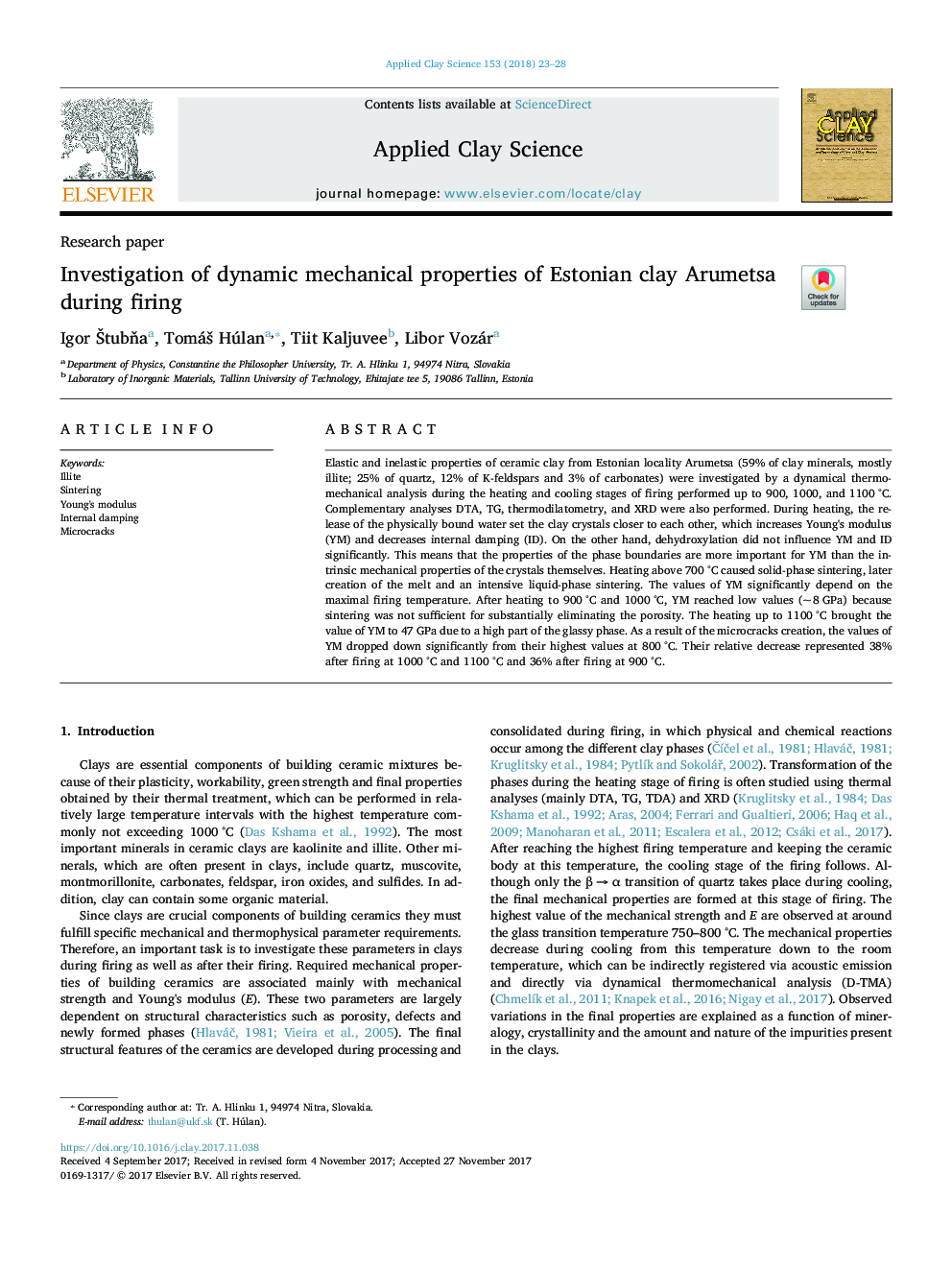| Article ID | Journal | Published Year | Pages | File Type |
|---|---|---|---|---|
| 8046204 | Applied Clay Science | 2018 | 6 Pages |
Abstract
Elastic and inelastic properties of ceramic clay from Estonian locality Arumetsa (59% of clay minerals, mostly illite; 25% of quartz, 12% of K-feldspars and 3% of carbonates) were investigated by a dynamical thermomechanical analysis during the heating and cooling stages of firing performed up to 900, 1000, and 1100 °C. Complementary analyses DTA, TG, thermodilatometry, and XRD were also performed. During heating, the release of the physically bound water set the clay crystals closer to each other, which increases Young's modulus (YM) and decreases internal damping (ID). On the other hand, dehydroxylation did not influence YM and ID significantly. This means that the properties of the phase boundaries are more important for YM than the intrinsic mechanical properties of the crystals themselves. Heating above 700 °C caused solid-phase sintering, later creation of the melt and an intensive liquid-phase sintering. The values of YM significantly depend on the maximal firing temperature. After heating to 900 °C and 1000 °C, YM reached low values (~ 8 GPa) because sintering was not sufficient for substantially eliminating the porosity. The heating up to 1100 °C brought the value of YM to 47 GPa due to a high part of the glassy phase. As a result of the microcracks creation, the values of YM dropped down significantly from their highest values at 800 °C. Their relative decrease represented 38% after firing at 1000 °C and 1100 °C and 36% after firing at 900 °C.
Related Topics
Physical Sciences and Engineering
Earth and Planetary Sciences
Geochemistry and Petrology
Authors
Igor Å tubÅa, TomáÅ¡ Húlan, Tiit Kaljuvee, Libor Vozár,
